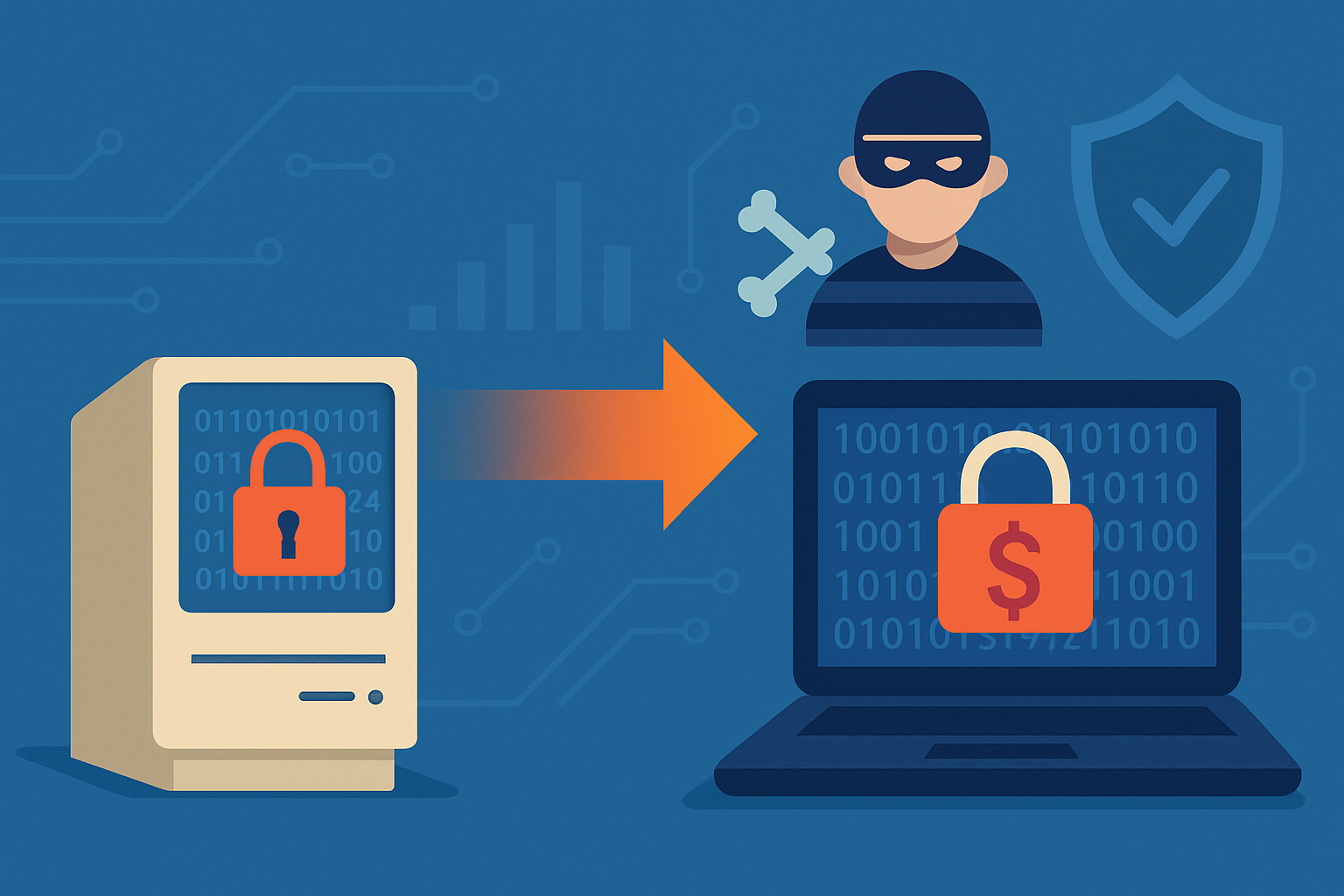The Evolution of Ransomware: Trends and Defense Strategies
Published on 2025-05-05 by Light4Tech Solutions

Ransomware has transitioned from being a trivial online problem to become a widespread digital emergency which drains billions from worldwide businesses annually. The malware started as random attacks on innocent users yet developed into a criminal enterprise worth billions of dollars. Organisations must shift to proactive security measures with multiple layers because cyber attackers continue to develop their skills.
From Digital Graffiti to Cyber Extortion
Ransomware first appeared in the late 1980s when hackers distributed the AIDS Trojan through floppy disks. The victims were forced to send cash to a Panama-based post office box to obtain access to their files again. The basic form of cybercrime known as digital extortion found its beginnings in this primitive system despite its outdated features.
Ransomware reached a new level of sophistication during the 2010s. The ransomware variants CryptoLocker from 2013 and WannaCry from 2017 implemented advanced encryption alongside self-spreading mechanisms and exploit kits which enabled them to propagate swiftly throughout networks. Ransomware evolved past individual victim targeting because it now poses risks to hospitals and governmental institutions as well as essential infrastructure.
Modern Threats and Ransomware-as-a-Service (RaaS) Ransomware-as-a-Service (RaaS) has emerged as the primary characteristic of modern ransomware operations because cybercriminals now offer ransomware tools to affiliates in exchange for payment sharing. The evolution of this model reduced technical requirements and led to an explosive growth in ransomware attacks.
Critical infrastructure became exposed to major attacks as demonstrated by the Colonial Pipeline ransomware incident in 2021. The modern ransomware operations incorporate data exfiltration alongside double extortion tactics and live chat negotiation portals which demonstrate their professional nature.
Modern attackers are focusing on smaller companies because these businesses typically have insufficient security measures yet still make payments to avoid extended system downtime.
Strategies for a Resilient Defense
Ransomware threats are constantly changing so organizations need to update their defensive strategies accordingly. Organizations should implement these vital measures to reduce their exposure and improve their ability to respond to security incidents.
1. Multiple security systems: including firewalls together with endpoint detection and response (EDR) and antivirus tools and intrusion detection systems should function together to detect and separate threats swiftly.
2. Regular backups: Organizations should create regular encrypted backups which are stored offline. Attackers lose their leverage when organizations can restore their clean data.
3. Employee Training: Phishing remains the top entry point for ransomware. Employees who receive ongoing security awareness training learn to identify dangerous email messages and file attachments.
4. Patch Management: Software and operating system updates should be implemented as soon as possible to block known vulnerabilities which prevented the EternalBlue exploit in WannaCry.
5. Zero Trust Architecture: Each user and device must prove their identity before accessing internal network resources. The principle of breach assumption should be implemented alongside the practice of giving users only necessary privileges.
6. Incident Response Plan: An established and practiced emergency response plan enables faster recovery operations and decreases damage extent. The incident response plan should include representatives from legal departments as well as communication specialists and IT experts for its development.
7. Engage Cyber Insurance Cautiously: The financial protection offered by cyber insurance must not substitute for proper security practices but should supplement them. Insurers who offer coverage might ask organizations to demonstrate their proactive security practices.
8. Use a reliable VPN service: NordVPN has been considered one of the best on the market, please learn more here and get protected.
And NordPass can also securely help you to manage you passwords: You can check it here.
The future of ransomware protection will depend on artificial intelligence (AI) which both attackers and defenders will use to automate targeting and detect anomalies. The only sustainable approach for defending against evolving ransomware threats involves maintaining constant vigilance and adaptive defensive measures.